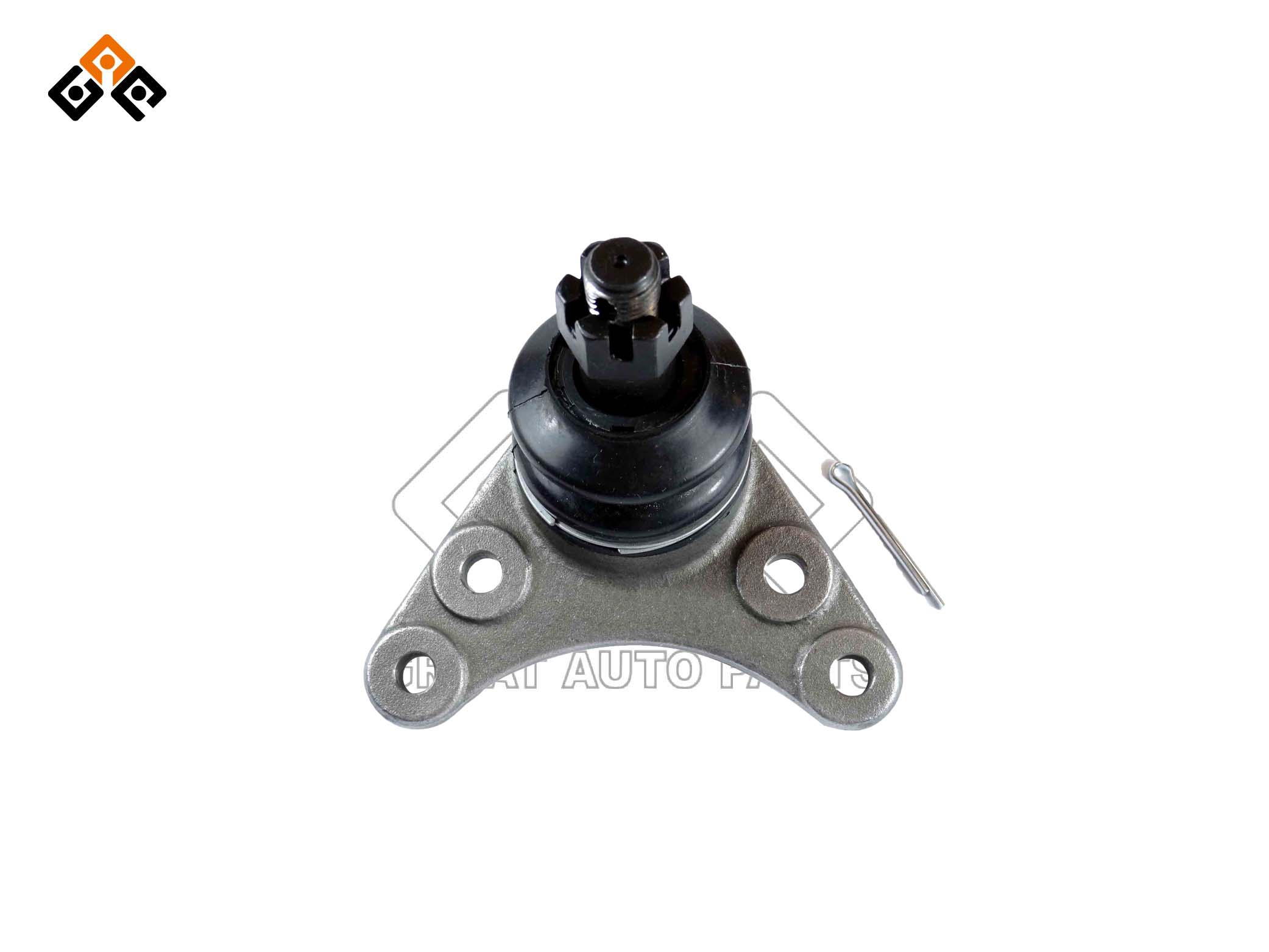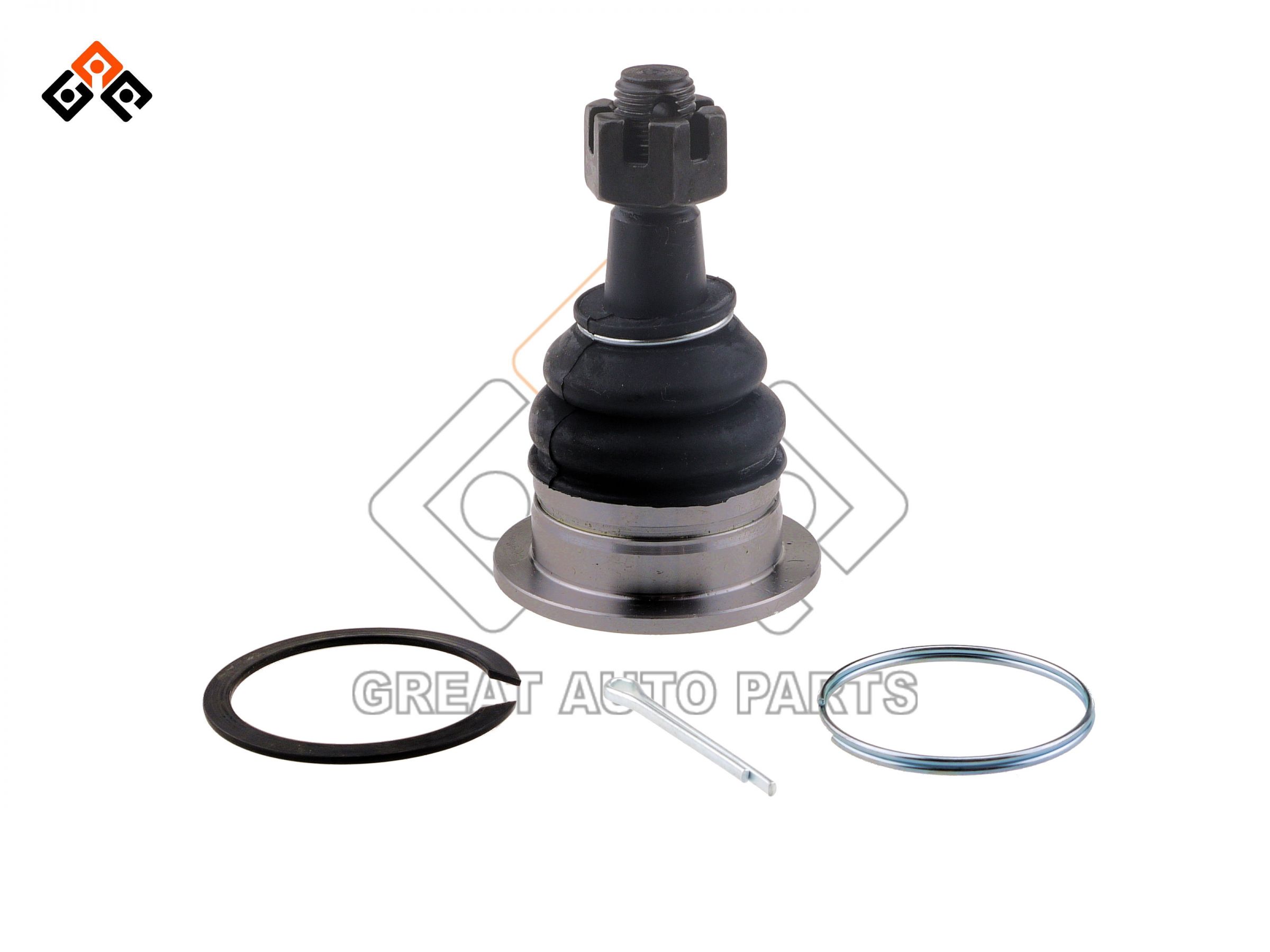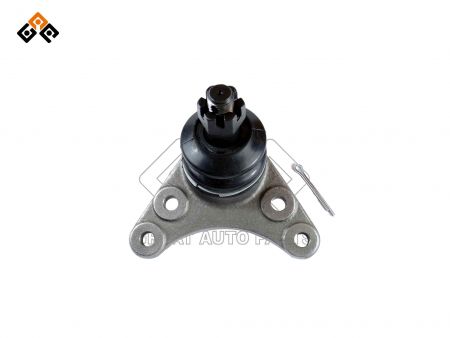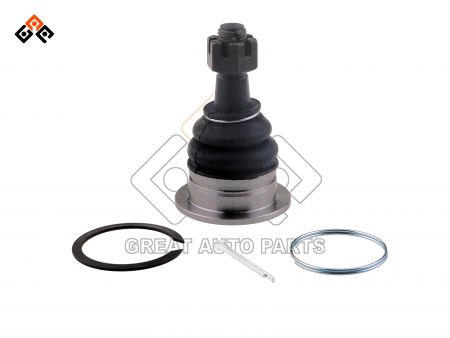Difficulty in steering? It's time to replace the ball joints.
What Is A Suspension Ball Joint?
Suspension ball joints, consisting of a ball stud and housing, are vital components of your car's suspension system, playing a crucial role in maintaining proper tire alignment and ensuring smooth driving. The ball stud, resembling a miniature spherical bearing, fits snugly into a socket within the housing. This design allows for multidirectional movement, enabling the controlled articulation of the suspension components as the vehicle encounters bumps, potholes, and turns. Typically, ball joints are installed at the connection points between control arms and steering knuckles or hubs, facilitating the seamless transfer of motion and forces between these components.
The Parts of a Ball Joint
Ball Stud
This is the core part of the ball joint, allowing the wheel to rotate freely in multiple directions, similar to a human hip joint.
Housing
The part that connects to the control arm, usually fixed by pressing in or bolting.
Bearing Stud
The part that connects to the wheel side, allowing the ball joint to connect with the wheel hub.
Seals
Protect the interior of the ball joint from dust and moisture.
Lubricant
Ensures smooth movement of the ball joint and reduces wear.
These components work together to ensure that the wheels maintain correct positioning while driving and can adapt to the unevenness of the road.
COMPARISON OF Upper Ball Joints and Lower Ball Joints
| Feature | Upper Ball Joints | Lower Ball Joints |
| Location | Attached to upper control arms | Attached to lower control arms |
| Function | Control vertical movement of front wheels | Support vehicle weight and maintain alignment |
| Weight Distribution | Handle less weight compared to lower ball joints | Bear more weight due to position in suspension |
| Wear | Typically experience less wear and tear | Subject to more wear due to weight and position |
| Adjustment | Often adjustable for camber and caster angles | Usually not adjustable |
| Size | Generally smaller in size | Larger in size compared to upper ball joints |
| Maintenance | May require less frequent maintenance | More prone to wear and may need regular checks |
Just as there are different types of hinges for various doors, cars utilize different ball joint designs. Upper ball joints, positioned like the shoulders of a gymnast, control vertical movement, while lower ball joints, akin to hip joints, bear the weight of the vehicle and maintain alignment, ensuring your car's "legs" stay strong and aligned during its journey.
Some common symptoms that indicate worn or faulty ball joints
Clunking or knocking sounds
If you hear clunking or knocking sounds when driving over bumps or making turns, it could be a sign of worn ball joints.
Vibrations
Worn ball joints can cause vibrations in the steering wheel or the vehicle's undercarriage.
Uneven tire wear
When ball joints wear out, they can result in uneven tire wear, potentially requiring premature tire replacement.
Unstable driving
If your vehicle feels unstable or drifts off course, it could be a sign of worn ball joints.
Poor handling
Worn ball joints can lead to poor handling, making it difficult to control your vehicle, especially during high-speed driving or sharp turns.
Stiff steering
Worn ball joints can make steering feel stiff or difficult to turn.
If you notice any of the above symptoms, it's important to have your tie rod ball joints inspected by a professional technician promptly. Ignoring worn ball joints can lead to more severe suspension system issues and compromise your vehicle's safety.
To address ball joint problems, consider the following recommendations
Seek professional assistance immediately
If you hear clunking sounds or experience instability or deviation from the intended driving path, have a professional technician inspect your ball joints promptly. They can assess the condition of the ball joints and perform necessary repairs or replacements.
Regularly inspect the suspension system
Regularly check your suspension system, including the ball joints, to detect signs of wear or damage early. If any issues are found, repair or replace damaged ball joints promptly.
Mind your driving habits
A gentle driving style can reduce stress on the suspension system and ball joints. Avoid harsh impacts or aggressive turns to minimize ball joint wear.
Periodically inspect tires
Regularly check tire wear and ensure even wear patterns. If you notice uneven tire wear, it could be a result of worn ball joints. Inspect and repair damaged ball joints before replacing the tires.
Use high quality ball joints
When replacing ball joints, choose high-quality ones to enhance their longevity and performance. Ensure to use premium parts that meet the recommended specifications of the vehicle manufacturer.
In conclusion, even minor wear and tear on ball joints should be addressed promptly to ensure proper functioning of your suspension system and driver safety. Always rely on the advice and guidance of professional technicians and maintain regular vehicle maintenance to keep your suspension system in good condition.








